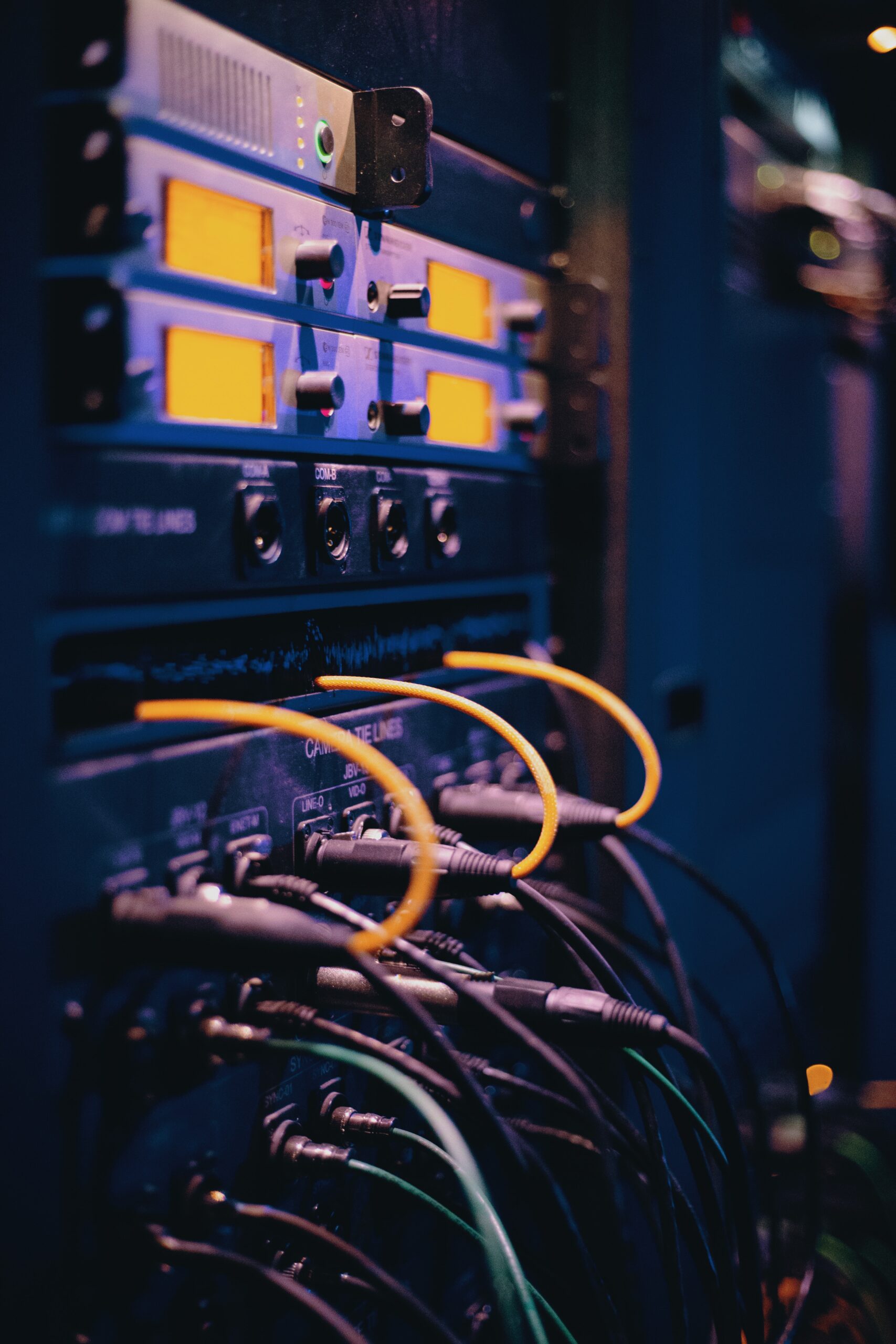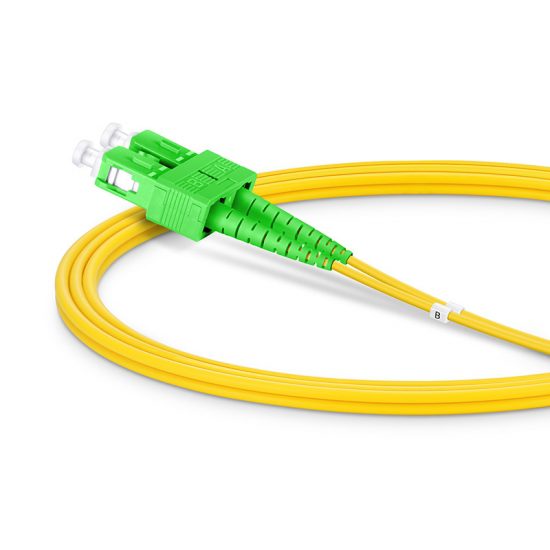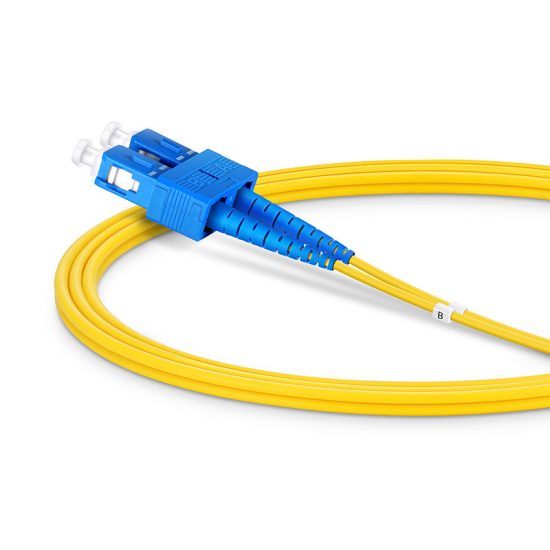What is a Fiber Optic Adapter?
A fiber optic adapter, also known as a coupler, is a specialized connector made to precisely join or join two ends of the fiber optic cable. The adapter has a straightforward layout: two slots opposite one another are occupied by the ends of two distinct fiber optic cables having fiber optic connectors. To ensure that there is little to no signal loss, the slots are made to exactly line the two ends.
Couplers are another name for fiber optic adapters, which couple the ends of two separate fibers. Simplex versions connect just one fiber; duplex versions connect two fibers, and some even provide connections of up to four fibers. While the body of the connection is constructed of plastic, precision matching is accomplished by the alignment sleeves, which are composed of either ceramic or metal, such as copper, to provide robust support for the connectors. For each type of available fiber optic connector, a fiber optic adapter or coupler is available.
Uses Of Fiber Optic Adapter
Fiber optic couplers are another name for FiberXP Fiber connection adapters. They serve as a fiber link between cables. Hybrid adapters connect various types of fiber optic connectors, whilst FiberXP connector adapters are employed to connect connectors of the same kind. A full range of fiber optic adapters, including ST, SC, FC, LC, and MTRJ models, are available from FiberXP for both multimode and single-mode fiber applications.
Features Of Fiber Optic Adapter
For the best possible connection between both optical connections, an adapter connects the optical fibers through an internal open bushing. The industry also provided a range of finely fixed flanges that could be fixed in a variety of panels. A link between APC faceplates is made possible by transformable optical adapters, which come with fiber optic connectors on both ends with various interface types. Multi-adapter or duplex adapters might increase installation.
Types of Fiber Optic Adapters
- FC Fiber Optic Adapters
FC stands for FERRULE CONNECTOR, which indicates that the fiber optic adapter’s exterior strengthening is the use of a metal sleeve that opens the way for the buckle. This fiber optic adapter had first been created by Japan NTT. the ceramic pin’s dock end of the earliest FC type connector. These connectors have a straightforward construction, are simple to use, and are simple to produce. The fiber end face is more susceptible to dust, makes Fresnel reflection easily, and makes it challenging to enhance return loss performance. Later, this kind of connector was enhanced by docking the round end of the pin (PC), even though the exterior structure remained the same. This resulted in significantly better insertion loss or return loss performance.
- SC Fiber Optic Adapter
This type of optical fiber connector was created by the NTT Corporation of Japan. The pin and coupling sleeve utilized in the structure are the same length and FC type as the rectangular shell. The casting method uses plug pins of the kind without rotation, with one end of the pin being ground more PC or APC. Such connectors have a low cost, are simple to plug and unplug, have strong compressive strength, minimal fluctuation in insertion loss, and have a high installation density.
- DIN47256 Fiber Optic Adapter
This connector was created in Germany. This connector has pins and coupling sleeves that are the same size as those found in FC types, and the end face is processed using the PC process. The structure is more intricate than the FC type connector’s, and the interior metal structure contains a control force spring to guard against end face damage brought on by high insertion pressure. Additionally, this connector offers fewer insertion loss values due to its improved mechanical accuracy.
- MT-RJ Fiber Optic Adapter
The MT connector, created by NTT, utilized the same latching technique as the RJ-45 type LAN interconnection point as the foundation for MT-RJ. It was simple to interact with the optical transceiver machine linked to the connector end of the optical fiber thanks to the alignment of the guide pins hung on both sides of the small bushing. The dual-core (0.75MM spacing) array design is primarily used for data transfer next-generation high-density fiber optic adapters.
LC Fiber Optic Adapter
(Bell) Institute of development and research created the lc-type connector using a practical modular jack (RJ) latch mechanism. The sleeves and pins are 1.25mm in diameter, which is half the size of those used for typical SC, FC, etc. The number of fiber optic connections in fiber channel frames will rise as a result. The LC type of connector currently holds the majority position in single-mode SFF, however, multi-mode applications are also expanding quickly.
- MU Fiber Optic Adapter
The miniature unit coupling connection, created by ntt based on the currently popular sc-type connector, is the smallest single-core fiber optic connector in the world. The connector’s self-holding mechanism and 1.25MM diameter sleeve give it the advantage of allowing for high-density installation. The MU connector series was created by NTT using MU’s L.25MM diameter bushings. They have simpler sockets for attaching LD/PD modules and plugs Wait, backplane connections with the self-holding mechanism, and socket-type connectors for connecting optical cable connections. As DWDM technologies are extensively employed and fiber-optic networks become more capable of handling bigger bandwidths, the need for MU-type connectors will likewise increase quickly.
- MTP/MPO Fiber Optic Adapters
While the MPO/MTP adapter is connected using an MPO/MTP Precise connection of two guidance holes with a diameter of 0.7mm and a guide pin on the left and right endpoints of the ferrule, the single-core SC fiber optic adapters are internally kitted with a ceramic ferrule that is precisely aligned through the cotter pin when the SC connector ferrule is connected. MPO / MTP adapters are frequently used in test equipment, MPO / MTP cassette modules, optical fiber distribution frames (ODFs) in building rooms, and communication system base stations.
How To Choose A Fiber Optic Adapter?
You might not know how to choose because there are so many various fiber optic adapters available and they all seem identical. In general, when selecting a fiber optic adapter, you should take into account the below two suggestions.
Fiber Cable Type
A fiber optic adaptor with a square, rectangular, or circular interface can be used if the fiber adapter must be attached to the same fiber cable type and connector. A hybrid fiber connector is necessary if a different type of cable needs to be connected. Any two kinds of fiber patch cords can be connected together using this hybrid fiber adapter. Because there are so many different hybrid fiber optic adapters available, it’s crucial to know what kind of cable to use before making a purchase.
Material of fiber adapter
The most significant element of fiber optic adapters is the alignment sleeve. Alignment bushings made of metal are a popular choice among some manufacturers, although ceramic-manufactured fiber optic connectors have proven to perform far better. The fiber optic adapter can achieve quick synchronization and high-precision fiber end-face connection because the ceramic’s crystal structure is highly strong and does not bend over time like metal.




